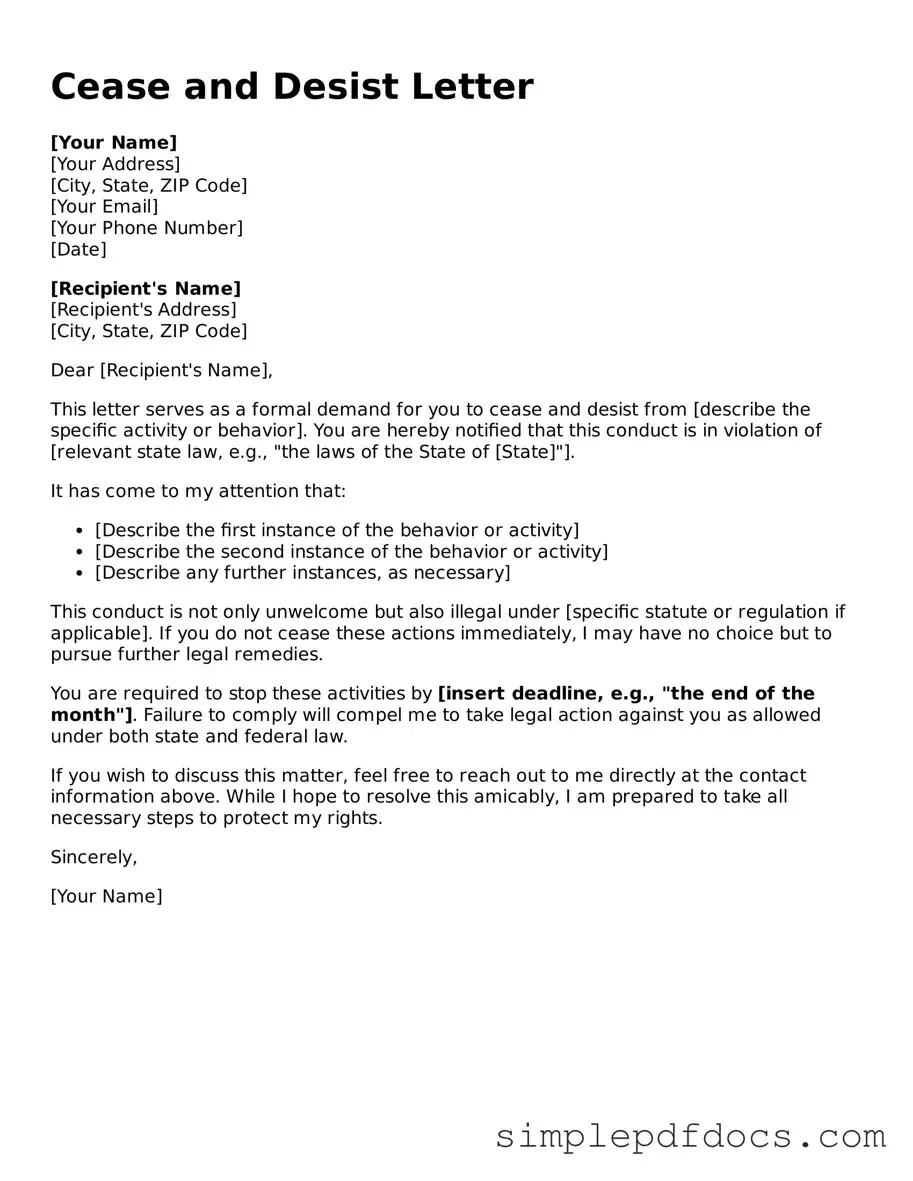Attorney-Approved Cease and Desist Letter Form
A Cease and Desist Letter is a formal document sent to an individual or organization to demand that they stop a specified activity. This letter serves as a warning, outlining the sender's legal rights and the actions they intend to take if the behavior does not cease. Understanding the components and purpose of this letter is essential for both senders and recipients to navigate potential legal disputes effectively.
Get Document Here
